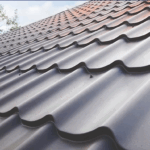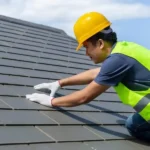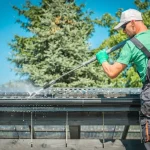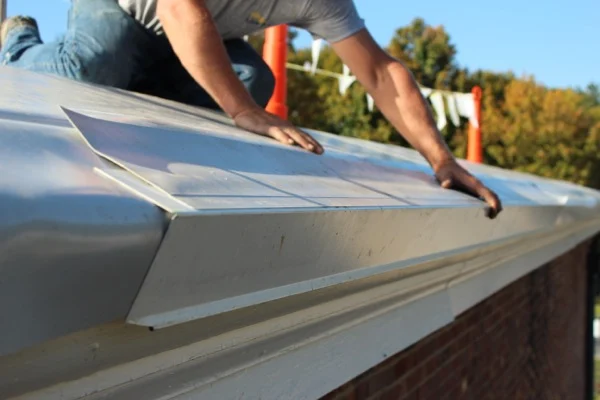Flat roof replacement involves removing aged or damaged flat roofing systems and installing a new, durable material—commonly EPDM roofing, TPO roofing, or rubber roofing—to improve longevity, weatherproofing, and insulation. The average cost of flat roof replacement depends on size, materials, and location, but making the right choice ensures energy efficiency, property protection, and reduced maintenance over time.
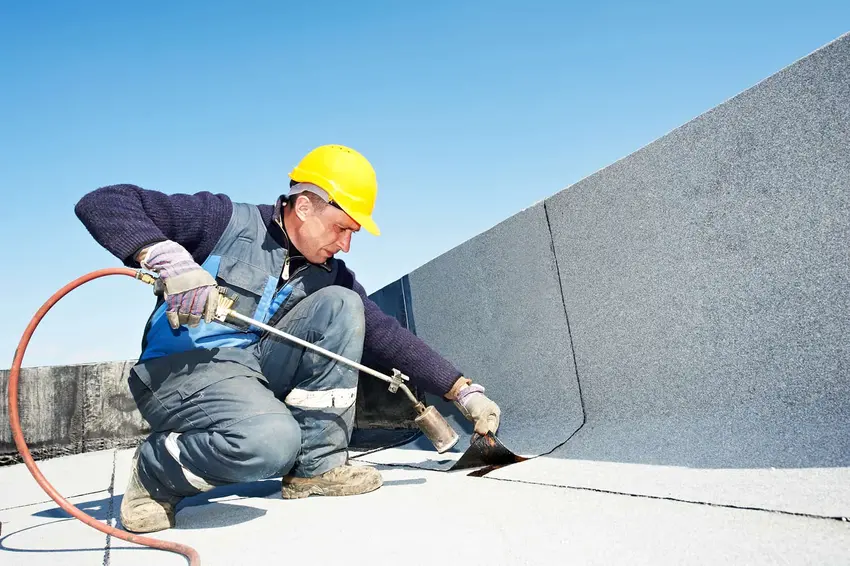
Content
What Is Flat Roof Replacement?
A flat roof replacement is a complete overhaul of an existing flat or low-slope roofing system. Unlike pitched roofs, flat roofs are more susceptible to pooling water and require specialized materials and techniques for effective performance.
Replacing a flat roof means stripping away the current layers—whether it’s built-up roofing, modified bitumen, or rubber roofing—and replacing them with a more modern, energy-efficient solution. Flat roofs are popular in urban homes, extensions, and garages, but due to their low incline, they demand materials that prevent leaks, withstand UV exposure, and allow proper flat roof drainage.
When Is It Time for a Flat Roof Replacement?
Over time, exposure to weather, debris, and UV rays weakens even the most durable flat roofs. Homeowners should consider a full flat roof replacement when:
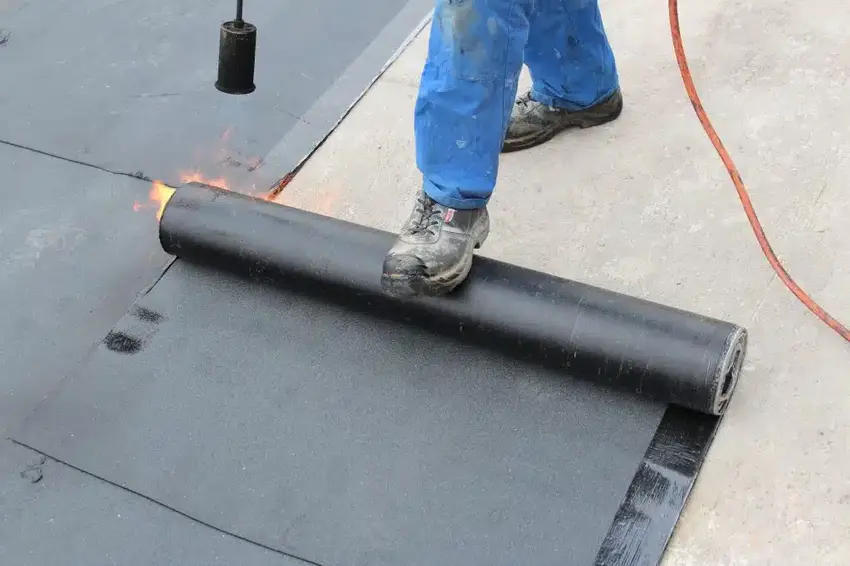
- There is regular water pooling and poor flat roof drainage
- The roof membrane shows visible cracking or blistering
- There are chronic leaks even after patchwork repairs
- Interior water stains, mold, or mildew appear
- The surface begins to sag or lose its shape
- The roof is over 20–25 years old
While minor damages can be resolved with flat roof repair, large-scale or recurring issues usually require full replacement. It’s best to consult flat roof specialists or a licensed contractor to conduct a thorough inspection and provide a flat roof replacement estimate.
Flat Roof Replacement Cost Breakdown
Understanding the flat roof replacement cost is crucial before committing to the project. Prices vary depending on the material, roof size, labor, and regional pricing.
Here’s a typical price range for different materials per square foot:
- EPDM Roofing: $4 – $7
- TPO Roofing: $5 – $9
- Rubber Roofing: $4.50 – $8
- Modified Bitumen: $3 – $6
- Asphalt Roofing: $3.50 – $5.50
For a standard 1,000-square-foot roof, total costs could range from $3,500 to $9,000. Additional expenses might include decking repairs, waste removal, permits, and inspections.
Smaller surfaces like a flat roof garage or flat roof extension are generally more affordable. However, even smaller jobs can become costly if water damage, rotted decking, or outdated insulation is discovered during demolition.
Which Materials Are Best for Replacing a Flat Roof?
Selecting the right roofing material is essential for long-term performance. Each type has unique advantages depending on the climate, desired longevity, and budget.
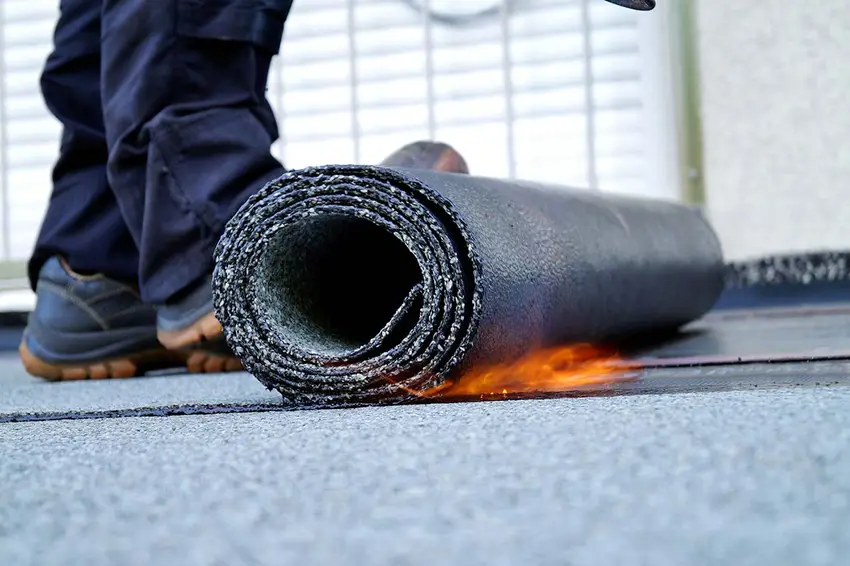
EPDM Roofing (Ethylene Propylene Diene Monomer): This black synthetic rubber membrane is highly durable, UV resistant, and widely used in residential flat roofs. It’s easy to install and lasts around 20–25 years with proper maintenance.
TPO Roofing (Thermoplastic Polyolefin): Known for its reflective white surface, TPO roofing helps reduce heat absorption, making it energy-efficient in warmer climates. It’s flexible, tear-resistant, and has a lifespan similar to EPDM.
Rubber Roofing: A popular term often used interchangeably with EPDM, rubber roofing systems provide an effective waterproof barrier and excellent insulation. It’s commonly chosen for flat roof repair and full replacements due to its strength and low maintenance.
Modified Bitumen: This asphalt-based material is reinforced with polyester or fiberglass for added strength. It’s installed in layers and works well in colder regions. However, it may not match the longevity of newer systems like TPO roofing or EPDM roofing.
Why You Should Hire Flat Roof Specialists
Replacing a flat roof is not a DIY project. Proper installation demands experience, precision, and a deep understanding of roofing systems. Hiring experienced flat roof specialists ensures the right materials are used, drainage is properly installed, and the final product adheres to local codes and safety standards.
Additionally, professionals will provide a flat roof replacement estimate upfront and identify potential issues—such as insulation gaps or rot—before they become costly surprises. For long-term value and protection, this is a smart investment.
What to Expect During the Flat Roof Replacement Process
The process begins with a detailed inspection to determine the extent of the damage. Once approved, the contractor will:
- Remove old roofing materials
- Inspect and repair the roof decking
- Install new insulation (if needed)
- Lay down the selected roofing material
- Secure seams and apply waterproof coatings
- Test flat roof drainage to ensure proper water flow
This process typically takes 2–5 days depending on the complexity of the roof and weather conditions. You may need to relocate sensitive items inside the home during installation.
How to Maintain a New Flat Roof
After your flat roof replacement is complete, regular maintenance helps extend its lifespan. This includes:
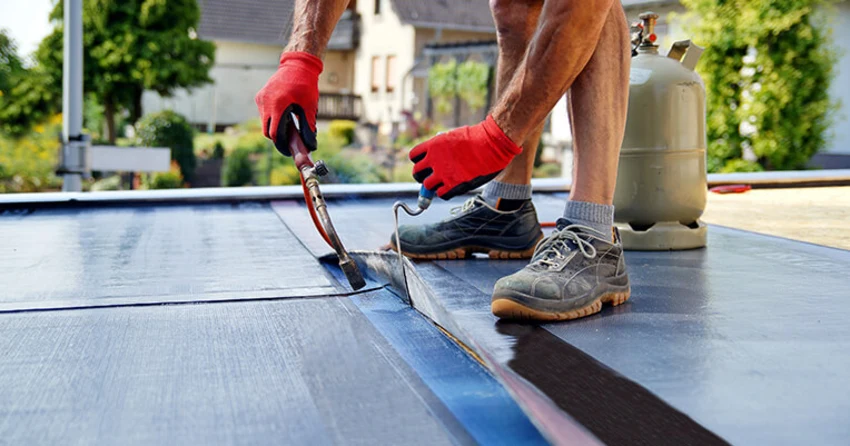
- Inspecting the roof twice a year, especially after storms
- Clearing debris from drains and outlets to ensure smooth water flow
- Checking seals, seams, and flashing for early signs of damage
- Hiring flat roof repair companies promptly if leaks or pooling water appear
A well-maintained roof can exceed its expected lifespan, reduce repair costs, and improve energy efficiency.
Planning Ahead with a Flat Roof Replacement Estimate
Before scheduling a replacement, always request a detailed flat roof replacement estimate. This should include material costs, labor, removal and disposal, warranty details, and projected timelines.
Reputable flat roof repair companies will provide written estimates and often include free inspections. Look for contractors with good reviews, local experience, and transparent pricing models.
Investing time into vetting your installer ensures your new roof will be installed correctly and perform well for years to come.
Conclusion
A properly executed flat roof replacement provides protection, efficiency, and peace of mind. Whether you’re replacing the metal roof on a flat roof extension, garage, or full home, choosing the right materials and experts makes all the difference.
Opting for modern solutions like TPO roofing, EPDM roofing, or rubber roofing ensures long-term performance. And by requesting a clear flat roof replacement estimate, performing routine maintenance, and acting fast on small repairs, you’ll enjoy a sturdy, leak-free roof for decades.
FAQs
What is the best material for a flat roof replacement?
EPDM roofing is widely considered one of the best materials for flat roof replacement due to its durability, weather resistance, and cost-effectiveness. Other excellent options include TPO roofing for energy efficiency and modified bitumen for easy installation and repair.
How long does a flat roof replacement last?
The lifespan of a flat roof replacement depends on the material used. EPDM and TPO roofs can last 20–30 years with proper maintenance, while modified bitumen typically lasts 10–20 years. Routine inspections and good flat roof drainage help extend your roof’s life.

Melissa Day is a dedicated home blogger who has been blogging for over six years. She covers everything home related. Melissa also loves writing posts about her travels to Europe with her husband and two children.


